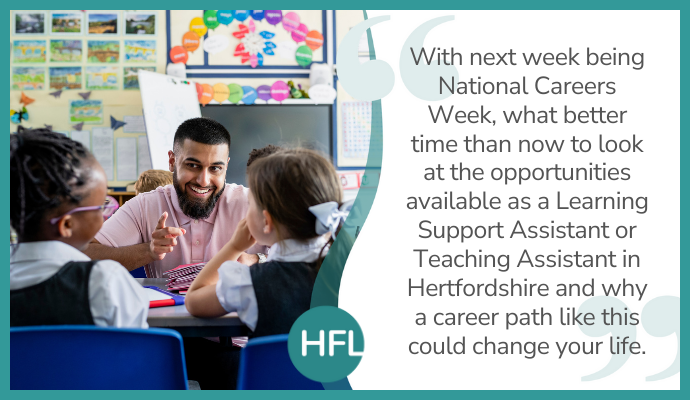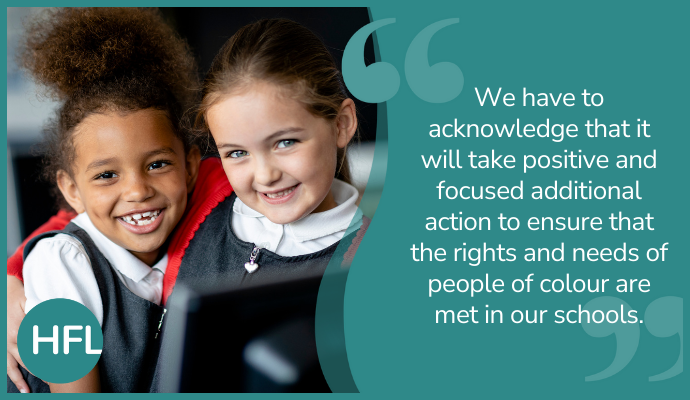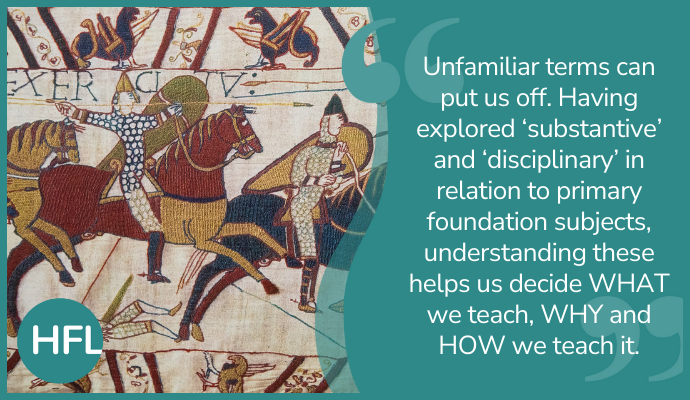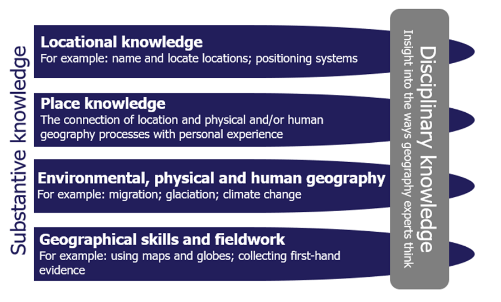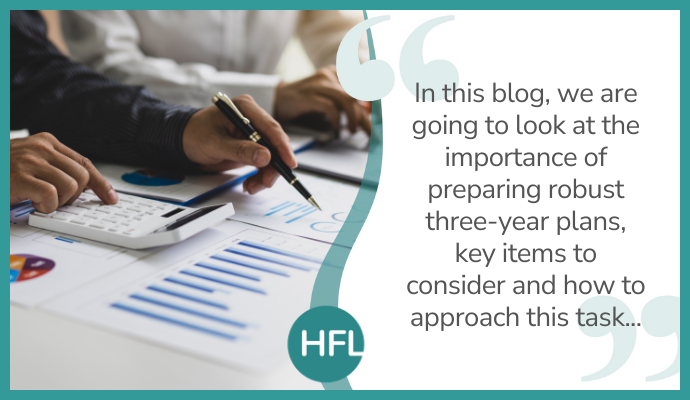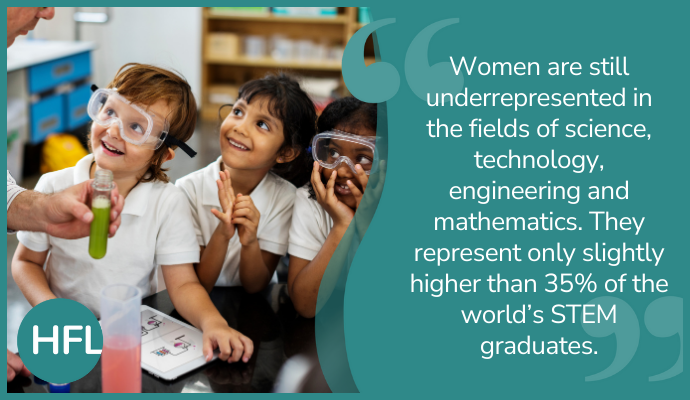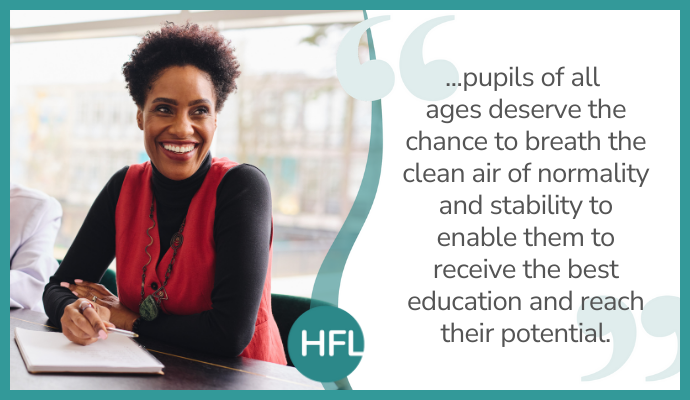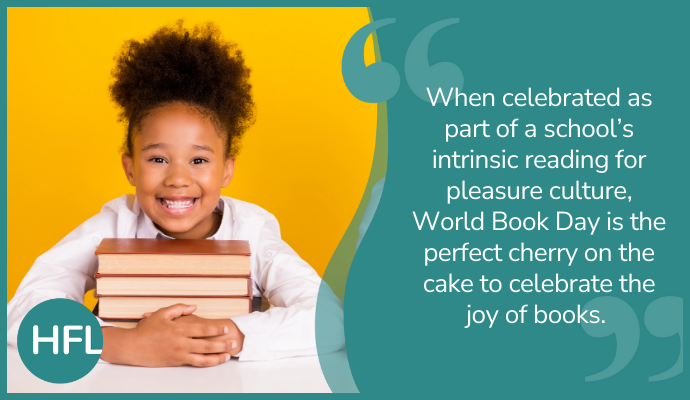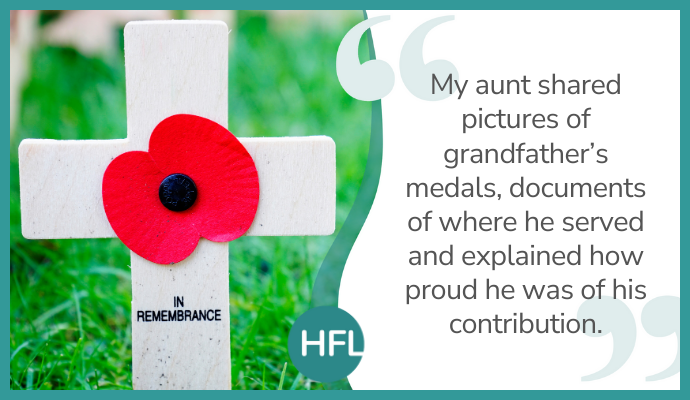"I need some greater depth maths ideas"
I hear this often when I am working with teachers considering their maths plans. I worry about this.
What do they mean by greater depth?
I hope they mean that they are looking for ways to take the children deeper into their learning, immerse them in maths and spark curiosity, encouraging children to make their own pathways of discovery in the fantastic and beautiful world of mathematics. But I fear that for some, it has been reduced to assessment criteria or just another criterion that needs to be fulfilled.
Collins publishing approached the HfL Primary Maths team back in 2020, asking if we had any ideas on supporting teachers with greater depth in maths. We embraced this opportunity to reflect on what we meant by greater depth.
- What does greater depth look like? How does it feel?
- What are we aiming to do when we teach ‘greater depth’?
- Is it worth it? Why?
- What challenges do teachers face when providing greater depth opportunities for their children?
What does greater depth in maths mean in your school?
This is a meaningful conversation to have with all members of your school community. Do they mean greater depth, or do they mean achieving higher standard? The difference between these two has already been addressed in an earlier blog. But to put it briefly, achieving the higher standard means that the children can score more points on a SATs paper, meaning they can answer questions accurately, quickly, and attempt some of the more challenging questions, which is an important and admirable achievement. But it is not, in our opinion, greater depth.
Greater depth is more than having access to more cognitive content. It is complex and develops a child holistically. We believe it is critical to move beyond just the 'maths content'; the ability to 'know more’, if you will. It concerns nurturing behaviours and characteristics that enable children to have confidence in their own learning and be highly motivated to continue to learn (see fig 1).
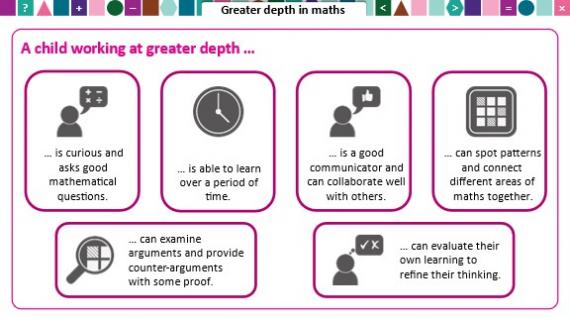
Figure 1: Training slide from Introducing the HfL Greater Depth Maths resource: getting the most from the materials
The result of the collaboration between HfL and Collins is ‘Greater Depth Maths: Building curiosity and confidence’. There are sets of resources for each of Key Stage 1, Lower Key Stage 2 and Upper Key Stage 2; a combination of printed and digital online resources.
The behaviours and characteristics shown in figure 1 are promoted through the 6C cycle; the backbone of the resource (fig 2). Each task provides opportunities for all children to engage in the 6Cs.
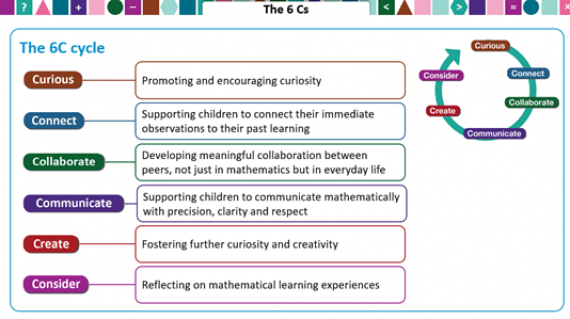
Figure 2: Training slide from Introducing the HfL Greater Depth resource: getting the most from the materials.
I want to use Ofsted’s three Is to explore and reflect on provision for greater depth.
What is it currently and what could it be?
The first of the three Is: Curriculum Intent
The School Inspection Handbook states that:
195. Inspectors will consider the extent to which the school's curriculum sets out the knowledge and skills that pupils will gain at each stage (we call this 'intent'). They will also consider the way that the curriculum developed or adopted by the school is taught and assessed in order to support pupils to build their knowledge and to apply that knowledge as skills (we call this 'implementation'). Finally, inspectors will consider the outcomes that pupils achieve as a result of the education they have received (we call this the 'impact').
Ofsted further detail what Intent means to them (paragraph 197). The series of statements provided can be turned into questions to support reflection on your Greater Depth provision.
What is the Intent of your curriculum, not just your maths curriculum but your whole school curriculum?
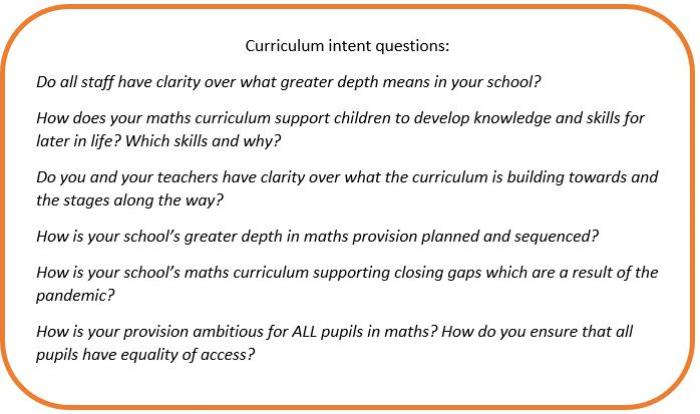
Are these greater depth behaviours worth teaching?
These greater depth behaviours (figure 1) are not unique to maths. They are desirable across the breadth of the curriculum, but maths provides an ideal place to teach, nurture and flex them.
Unfortunately, to some teachers, they are too nebulous, perhaps too highbrow, and unachievable in an everyday classroom.
Is your curriculum ambitious for all? Do you ensure that the curriculum is not reduced for those from disadvantaged backgrounds or pupils with SEND?
Should these behaviours be taught only to those who have 'grasped the concept'?
Should they be only for the elite children?
If we teach these only to an exclusive group of children, what are we denying their peers?
Is greater depth what we do after the children have become fluent in the facts and procedures? Which facts and which procedures; all of them or some of them?
Or do greater depth behaviours support children in dealing successfully with unknown and unpractised problems?
I would argue that greater depth behaviours help children build an armoury of strategies and approaches which will support them whenever they eventually meet challenges in their maths journey. If so, then these behaviours are precisely what need to be taught to those who struggle occasionally or often.
Greater depth is not an assessment criterion; it is a set of behaviours that enable children to become their own self-support system and create a well of belief within themselves that they can return to when the going gets tricky.
Uniquely, Greater Depth Maths: Building curiosity and confidence has frequent support for children struggling to access the learning or those that have hit a dead-end, referred to as 'stumble support'. There is a large quantity of scaffolded support for each task to help children access the learning or get them over a learning bump. This is through slides for sharing, additional concrete experiences, questions to encourage thinking and behaviour, word banks, sentence starters and speaking frames. The aim is to make greater depth accessible to as many children as possible.
How is your curriculum planned and sequenced?
How do your teachers currently develop greater depth opportunities? Is it consistent and progressive across the whole school?
Do they have clarity over age-appropriate expectations and outcomes? Do they know how their year group(s) fit into the bigger developmental pathway?
These resources provide curriculum maps and examples of age-appropriate responses.
Closing gaps because of the pandemic?
We all know that children learning remotely for extended periods has impacted their social development. This resource provides a structured, scaffolded cycle that provides real opportunities and space to develop children's ability to collaborate with each other, focusing on individual responsibility, teamwork and respect for others.
The second of the three Is: Curriculum Implementation
The School Inspection Handbook states that
207. In evaluating the implementation of the curriculum, inspectors will primarily evaluate how the curriculum is taught at subject and classroom level.
Again, the following statements (in the School Inspection Handbook) can be changed into questions.
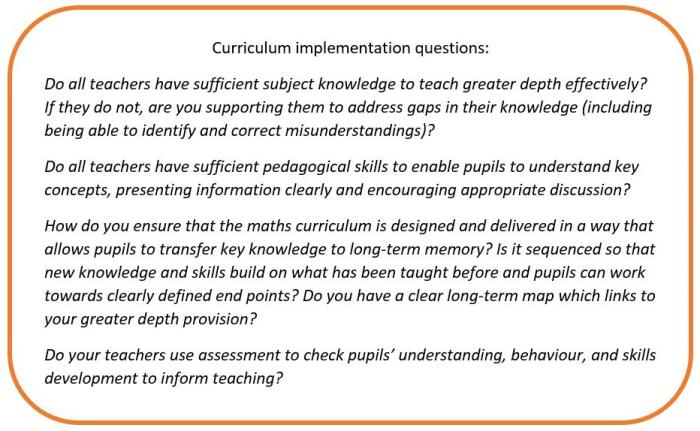
Many teachers feel nervous about teaching greater depth. This resource provides detailed lesson plans, including small steps to support teachers in developing their own pedagogy (including CPA, questioning and discussion development) and enhancing their subject knowledge (through clear explanations and examples). Teachers develop their skills and feel empowered to teach greater depth maths to all children.
Warning triangles (see figure 3) are used throughout to highlight possible misconceptions.

Figure 3: example of warning triangles from the teacher's guide
Clear curriculum maps (National Curriculum, White Rose and ESSENTIALmaths) ensure that children have the opportunity to revisit prior learning at a deeper level, re-engaging and reactivating their knowledge and skills, strengthening the pathways and interrupting forgetting.
The assessment rubrics are another unique feature of Greater Depth Maths: Building curiosity and confidence. These break each of the 6Cs down into progressive steps covering KS1, LKS2 and UKS2.
Figure 4 (below) is a small section of the KS1 rubric.
Using a rubric can help with:
- developing self-regulation: children can use it to help plan or monitor their own learning
- direct teaching: it moves the focus from task completion to learning skills, knowledge, and behaviour
- providing a learning pathway: when used over time, it can help to identify gaps and next steps so feedback can be fine-tuned and highlighted as a teaching opportunity; this feedback and teaching then loops back into the next task

Figure 4: Example of a section of the assessment rubric for KS1
The final of the three Is: Curriculum Impact
The School Inspection Handbook states that
217. When inspectors evaluate the impact of the education provided by the school, their focus will primarily be on what pupils have learned.
To continue with the question generation:
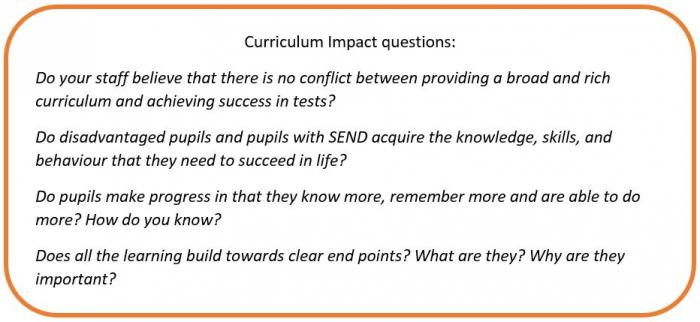
The questions based around Ofsted’s three Is have been collated into a separate document.
Greater depth maths reflection questions pdf (49.55 KB)
Many of these questions have already been addressed by providing:
- a clear, structured pathway for teachers to follow, exemplified with age-appropriate responses
- assessment rubrics which will allow teachers to profile holistic behaviour and skill development
- extensive pedagogical and subject knowledge notes to support less confident teachers
- a wide range of scaffolding strategies to support less confident children; termed 'stumble support'
The endpoint is to have children who see maths as more than a series of calculations but are genuinely on the greater depth journey. Developing behaviours and skills will enable them to help themselves, become independent learners, be curious and tinker with ideas and questions, work well with others, communicate their understanding effectively to others, and develop a deep love of maths.
If you would like to find out more about the Greater Depth Maths, download some free samples.
Purchase Greater Depth Maths from Harper Collins


